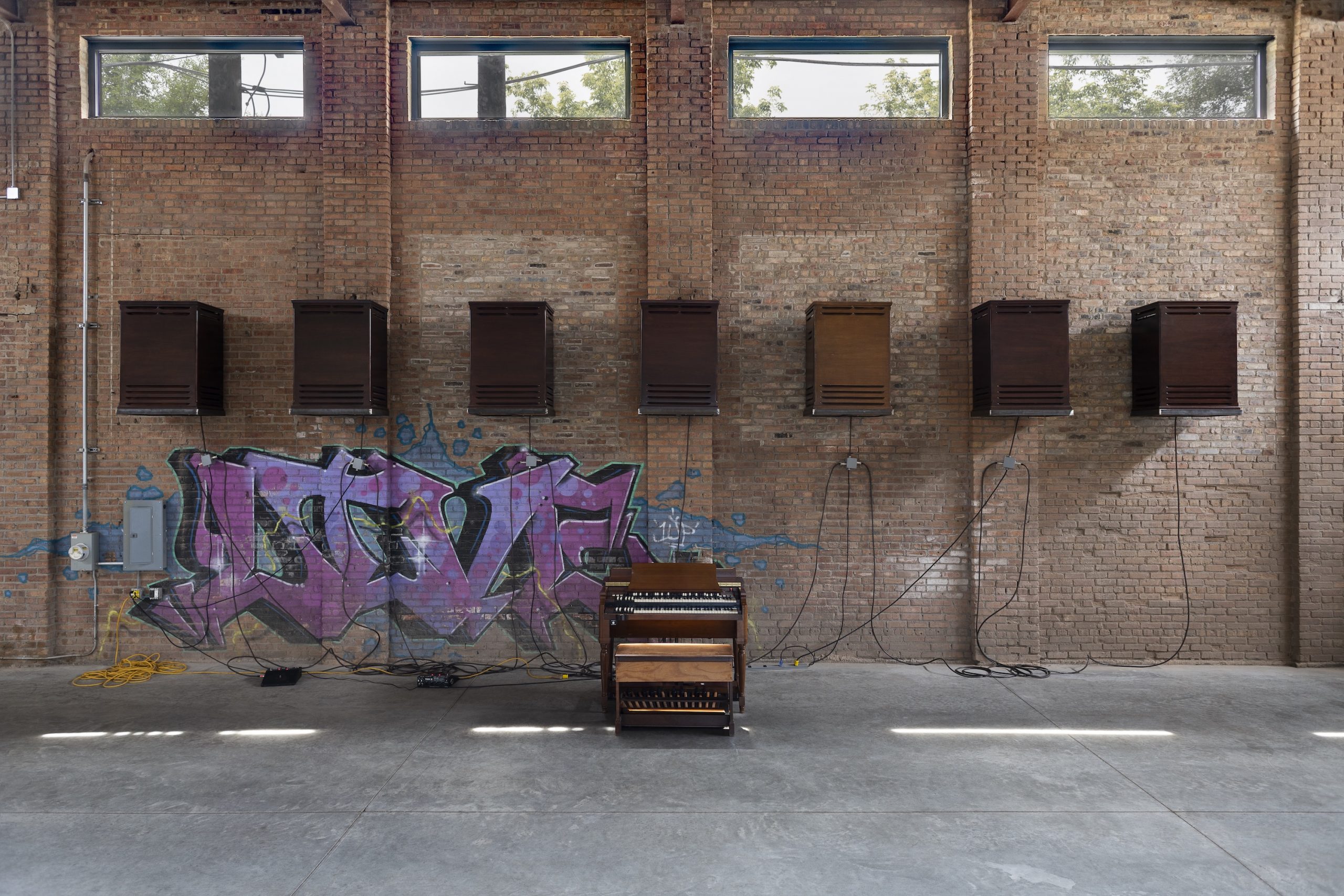Summary
Young Lords and Their Traces at the New Museum in New York is an introspective exhibition devoted to Theaster Gates (b. 1973) and his installations inspired by a creative process that is both spiritual and practical.
Grieving in Artistic Time
Young Lords and Their Traces at the New Museum pays tribute to the loss of loved ones who were of influence to Theaster Gates. These individuals include the artist’s father, Theaster Gates, Sr., international curator Okwui Enwezor, Black feminist writer bell hooks, fashion designer and entrepreneur Virgil Abloh, Chicago potter Marva Lee Pitchford-Jolly, art and music critic Greg Tate, and the painter Sam Gilliam.
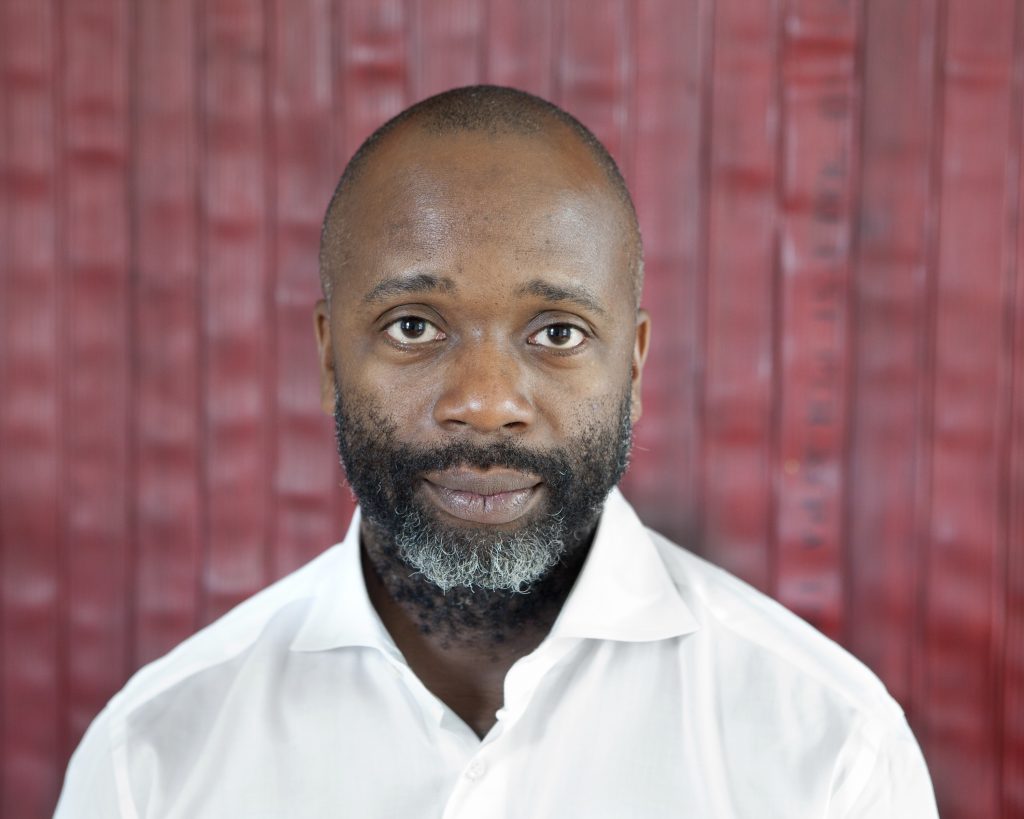
Theaster Gates, photo by Sara Pooley. Courtesy of the New Museum, New York, USA.
The artist arranged six 100-year-old museum vitrines acquired from the storage rooms of the Oriental Institute at the University of Chicago to display an idiosyncratic array of objects such as the small bell given to Gates by bell hooks and a pair of sneakers designed by Virgil Abloh. Other encased objects include poems, one by Gates for Marva Jolly and another by the artist Arthur Jafa for Abloh, and an early 19th-century stoneware jar signed by the enslaved potter David Drake, one of the few known Black potters of the South.
Surrounding the vitrines are works by Agnes Martin, Frank Stella, and Sam Gilliam, including a paint-splattered boot from Gilliam’s studio. These items were chosen for Gates’ personal connection to the work of these artists. This museum within a museum designates sentimental objects of intrinsic value to Gates as worthy of being seen in this public setting but is also an opportunity for Gates to work through his own feelings of loss through the celebration of these individuals’ lives.
Gates explains his choices for this exhibition as:
Constituting an important pivot within my practice—not away from the social, but a deepening, a ripening, of my practice toward objecthood that has been growing for the last decade.
“When the Battle Is Over,” Young Lords and Their Traces, exhibition catalog, New Museum, New York, NY, USA, p. 5.
Black Chapel
Among the vitrines is one strewn with archival images from the magazines Ebony and Jet, created for Black readers and in celebration of Black excellence. These images are just a fraction of the 20,000 images purchased by Gates’ Black Image Corporation from the original owner of these magazines, the Johnson Publishing Company.
This transaction gave Gates the licensing rights to these images and thus the ability to keep these archival images of Black positivity in circulation, as he does in the six-channel video, Art Histories (2019). Installed in a small space next to the gallery of vitrines, images from the Johnson archive and reproductions from another collection of 60,000 glass lantern slides, procured by the artist in 2008, are projected side by side. The glass lantern slides were used to teach art history courses at the University of Chicago, going back to the beginning of the 20th century.
Paired with an audio component that is a mixture of soundbites from Black intellectuals including bell hooks, traditional Eurocentric art history lectures and a poem recited by Gertrude Stein, the rapid rotation of side-by-side projections is an immersive experience. The merger of visual and audio archives remixes traditions of scholarship that have amplified the white gaze and colonialist hierarchies with updated ideas of Black thought and self-representation.
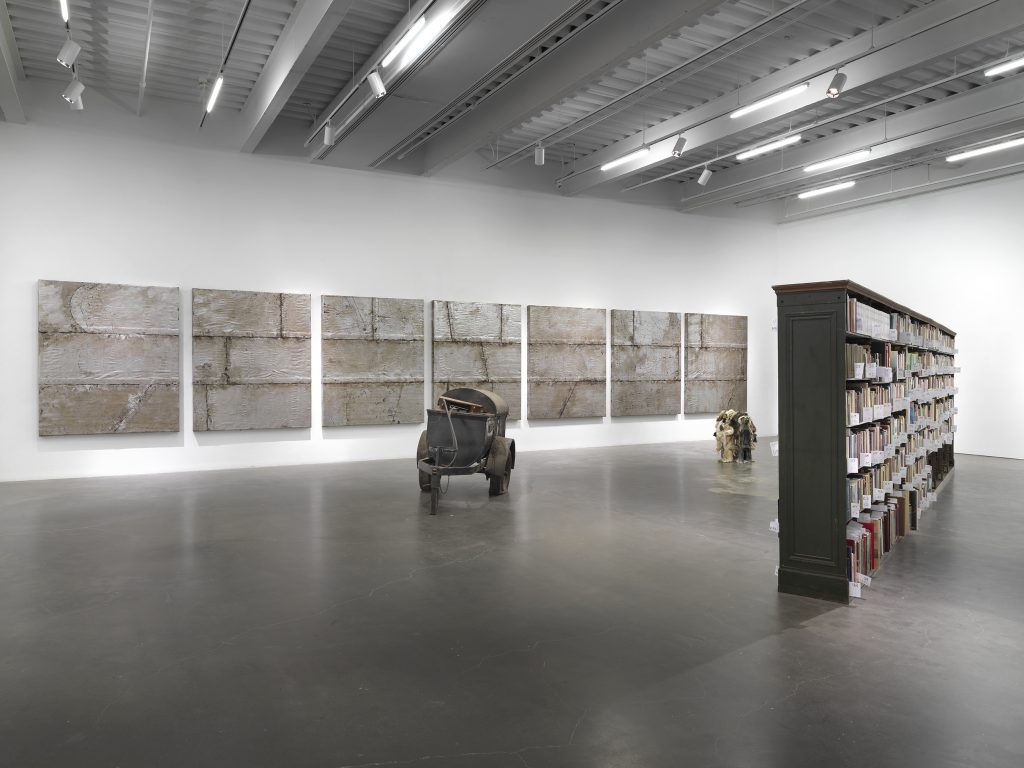
Installation view: Theaster Gates: Young Lords and Their Traces, 2022, New Museum, New York, NY, USA. Photo by Dario Lasagni. Courtesy of New Museum.
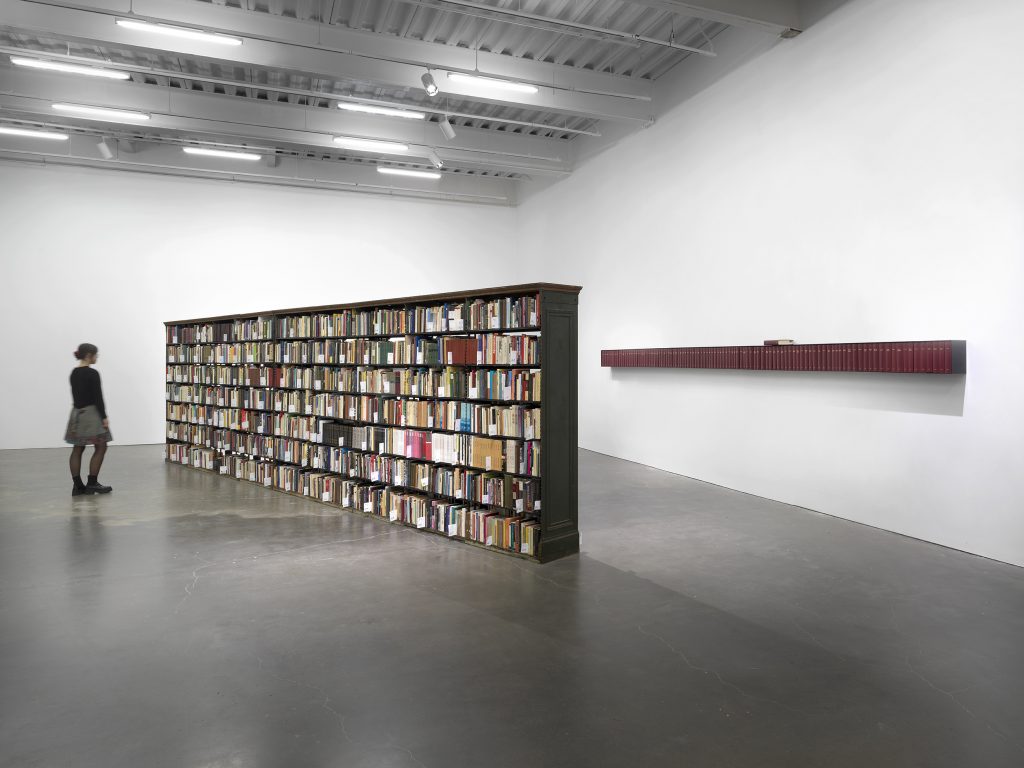
Installation view: Theaster Gates: Young Lords and Their Traces, 2022, New Museum, New York, NY, USA. Photo by Dario Lasagni. Courtesy of New Museum.
In a spacious room nearby is an imposing row of bookshelves running through the center of the room and containing the recently acquired archives of Robert Bird. Bird was a scholar of Russian cinema and a former colleague of Gates at the University of Chicago. The artist widens the scope beyond his personal connection with Bird to include the current war in Ukraine but also references a history of Russian resistance and a Soviet-era project that used propaganda to attract Black laborers of the Jim Crow South.
Besides the Bird archive is Sweet Chariot (2012), a tar kettle that the artist inherited from his father, who was a professional roofer. On the wall behind this antique piece of machinery is a suite of paintings made from industrial roofing materials that also pay homage to the artist’s father but on a much grander scale to generations of unrecognized labor forces.
The tar paintings, Seven Songs for Black Chapel (2022), were commissioned for the Serpentine Pavilion in London, where they were installed inside the Black Chapel (2022), an outdoor structure designed in collaboration with Adjaye Associates as a sanctuary and space for meditation. Scholarly thought, manual labor, spirituality, and the poetic epitaphs running across a shelf of bound books, A Negro Digest for a Weary Heart, originate from the personal life of the artist but in this context coalesce into a broader understanding of social and political histories.
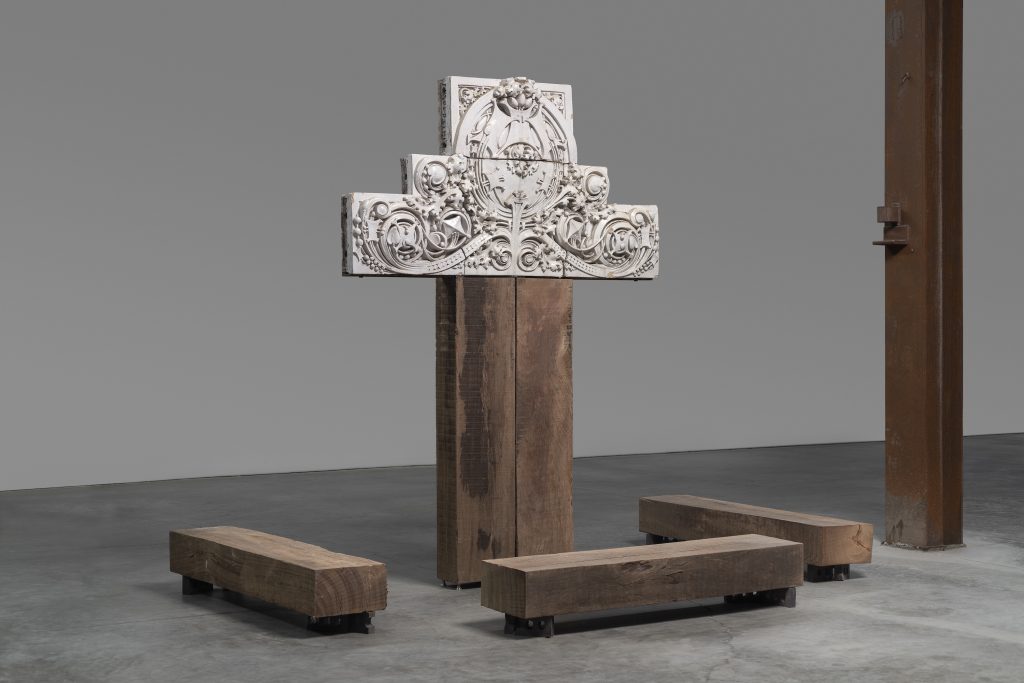
Theaster Gates, A Cross Between Finance and Pastoral Care, 2017, terracotta, maggia gneiss, iron plate, Louis Sullivan building fragment, and wood. © Theaster Gates. Courtesy Theaster Gates. Photo by Julian Salinas.
Black Vessels
Black Vessels for the Traces of Our Young Lords and Their Spirits (2022) is a selection of recently fabricated stoneware pieces and recovered architectural fragments that have taken over an entire floor of the museum. Gates was formally trained to throw pottery under the Japanese master Koichi Ohara in Tokoname, Japan.
Early on in his career, Gates incorporated his work as a potter into performative dinner parties serving sushi and soul food on vessels hand-crafted by the artist. Merging the Japanese mingei movement through its celebration of folk craft and recognition of both form and function with the long tradition of skilled Black artisans of the American South from the time of slavery onward, the artist conceived of Afro-mingei. Also, the name of a private tea studio run by the artist in Chicago, Afro-mingei situates the artist as part of a tradition of stoneware production by generations of unrecognized Black ancestors.
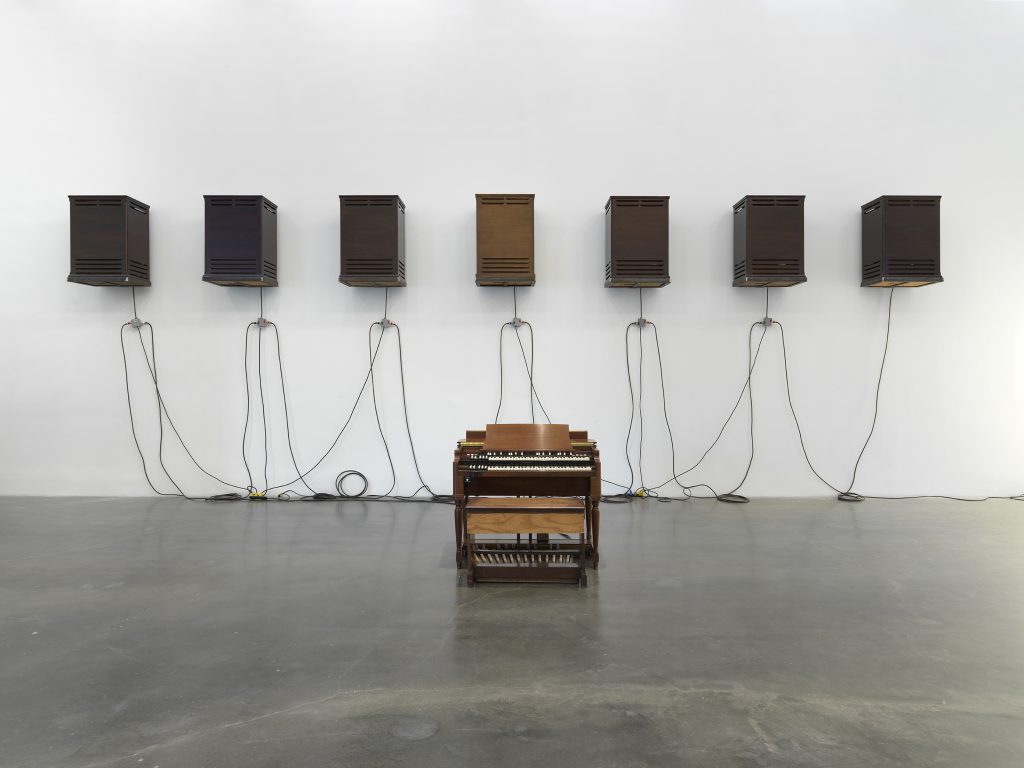
Installation view: Theaster Gates: Young Lords and Their Traces, 2022, New Museum, New York, NY, USA. Photo by Dario Lasagni. Courtesy of New Museum.
The mythical and spiritual aspects of Gates’ process, from his production of stoneware vessels to his massive undertakings, extend into his musical performances with the Black Monks described by the artist as a group of gospel musicians who have lost their church.
Removed from organized religion, the artist has found ways to release a spirituality through performances that often take place within spaces of his design. In this case, the installation of an organ commonly used by Black church choirs of A Heavenly Chord (2022) on an upper floor of the New Museum has been spontaneously activated with performances by the Black Monks throughout the run of the show. Otherwise, one of the organ keys remains pressed down to produce one long note amplified through several large speakers mounted along one wall.
This audio altarpiece is at the center of a space where Bathroom Believer (2018) shines brightly in one corner, an installation of lightbulbs and porcelain panels on the floor that reference the artist’s mother who found spiritual refuge in the bathroom during his childhood. On the opposite corner is a church bell recovered from the St. Laurence Catholic Church of Chicago that was destroyed in 2014. The bell sits inside a wooden box, Chord (2022), made from the 138-year-old reclaimed floors of the Wade Thompson Drill Hall at Park Avenue Armory in New York. Chord is one of several pieces from the series of Floor Works made from these repurposed floorboards. Other Floor Works in this space hang on the wall or lean against the wall, their forms reminiscent of Frank Stella’s Black Paintings of the mid-20th century.
The exhibition at the New Museum works through the heaviness of grief on the lower floor but gives way to an uplifting spirituality that readily flows around the two upper floors.
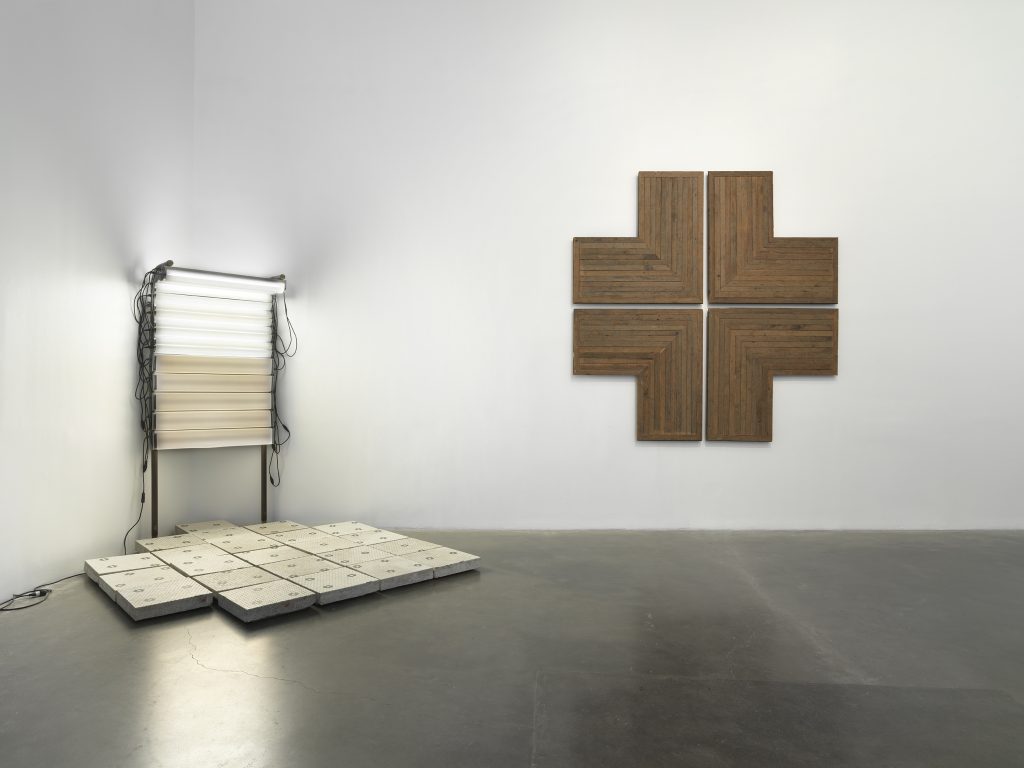
Installation view: Theaster Gates: Young Lords and Their Traces, 2022, New Museum, New York, NY, USA. Photo by Dario Lasagni. Courtesy of New Museum.
Young Lord
The exhibition title, Young Lords and Their Traces, refers to the radical Puerto Rican groups who were active in Chicago and New York during the late 1960s. Remembered by some as an affiliation of gangs, Gates has shifted this narrative to emphasize the community outreach services organized by these groups in the different cities to address the needs of Puerto Rican populations that were neglected by the state and denied basic services.
Gates adds to the idea of the traces left behind by the efforts of the Young Lords with those of the individuals remembered and honored in this exhibition through the inclusion of personal and borrowed objects. While the impact of the traces left behind differ depending on one’s perspective, these traces or forgotten aspects of individual and collective histories, as discerned by the artist, take on new meaning in the spaces created by Gates.
A selection of objects may have taken center stage at the New Museum but the artist’s interventions around Chicago’s South Side have defined his professional expertise in the areas of public service and urban planning. Through the establishment of the Stony Island Arts Bank, the Rebuild Foundation, Dorchester Industries, and other platforms, the artist has found ways to not only expand his career but to service his local community. Gates is a young lord holding onto the traces of others who invites the public to make their own discoveries through a process that has left traces of himself along the way.
Theaster Gates: Young Lords and Their Traces at the New Museum in New York is open through February 5, 2023.
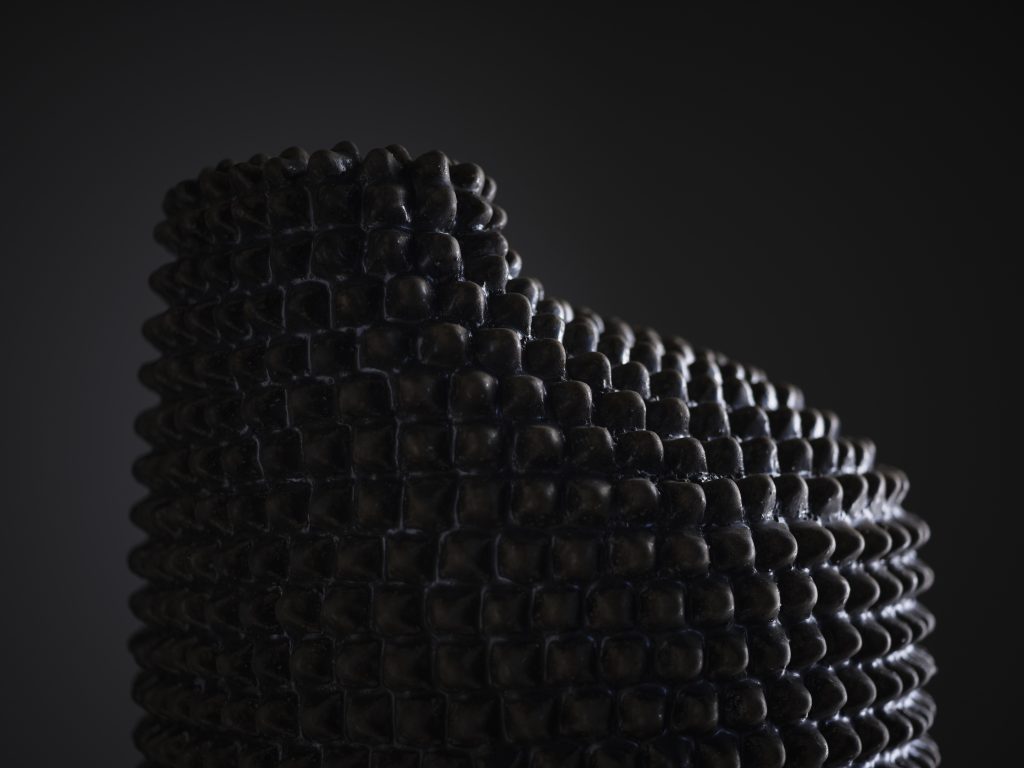
Theaster Gates, Black Vessel for the Traces of Our Young Lords and Their Spirits – Vessel #1, 2022, high-fired stoneware with glaze and ash plinth. © Theaster Gates. Courtesy of Theaster Gates. Photo by Jim Prinz Photography.
